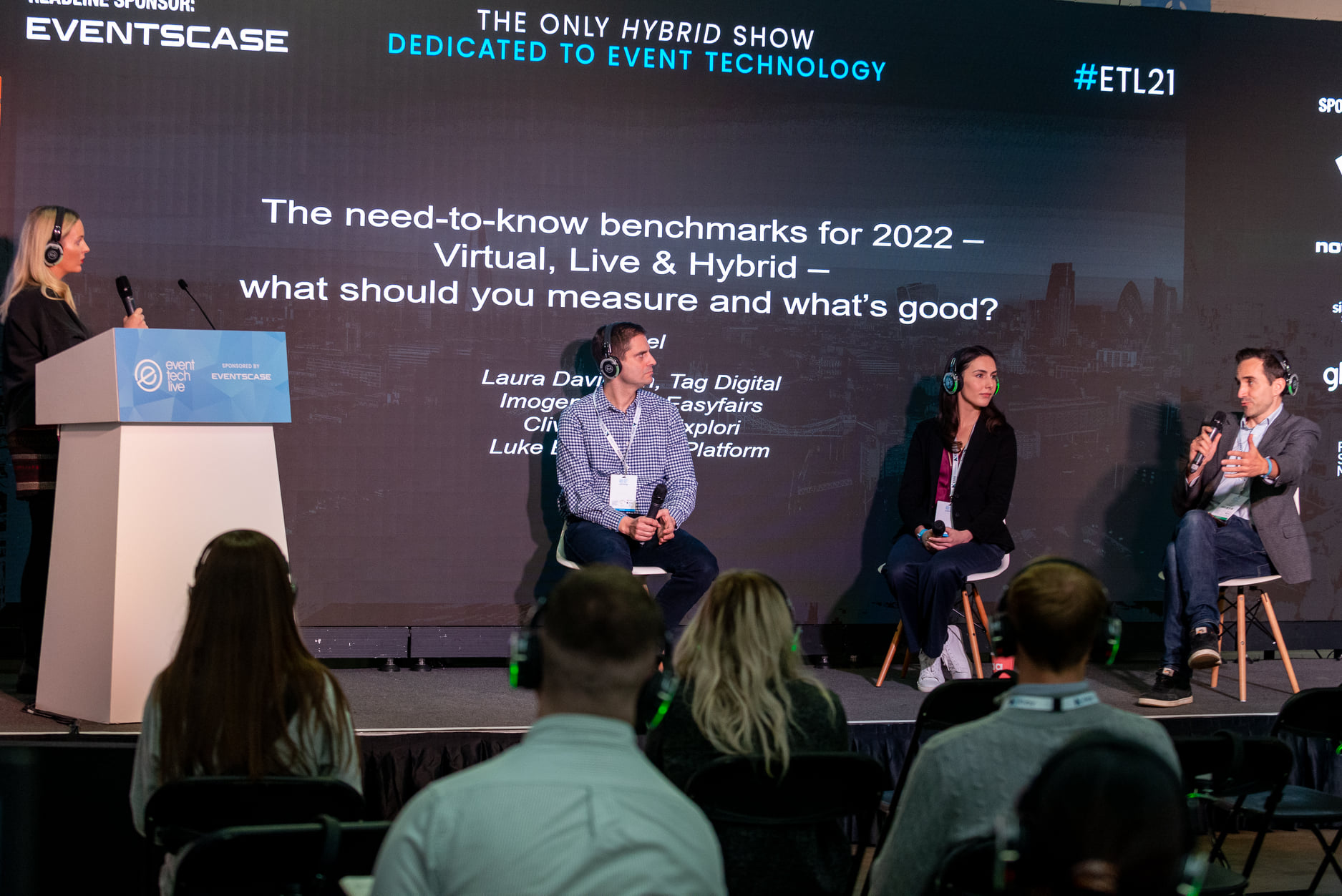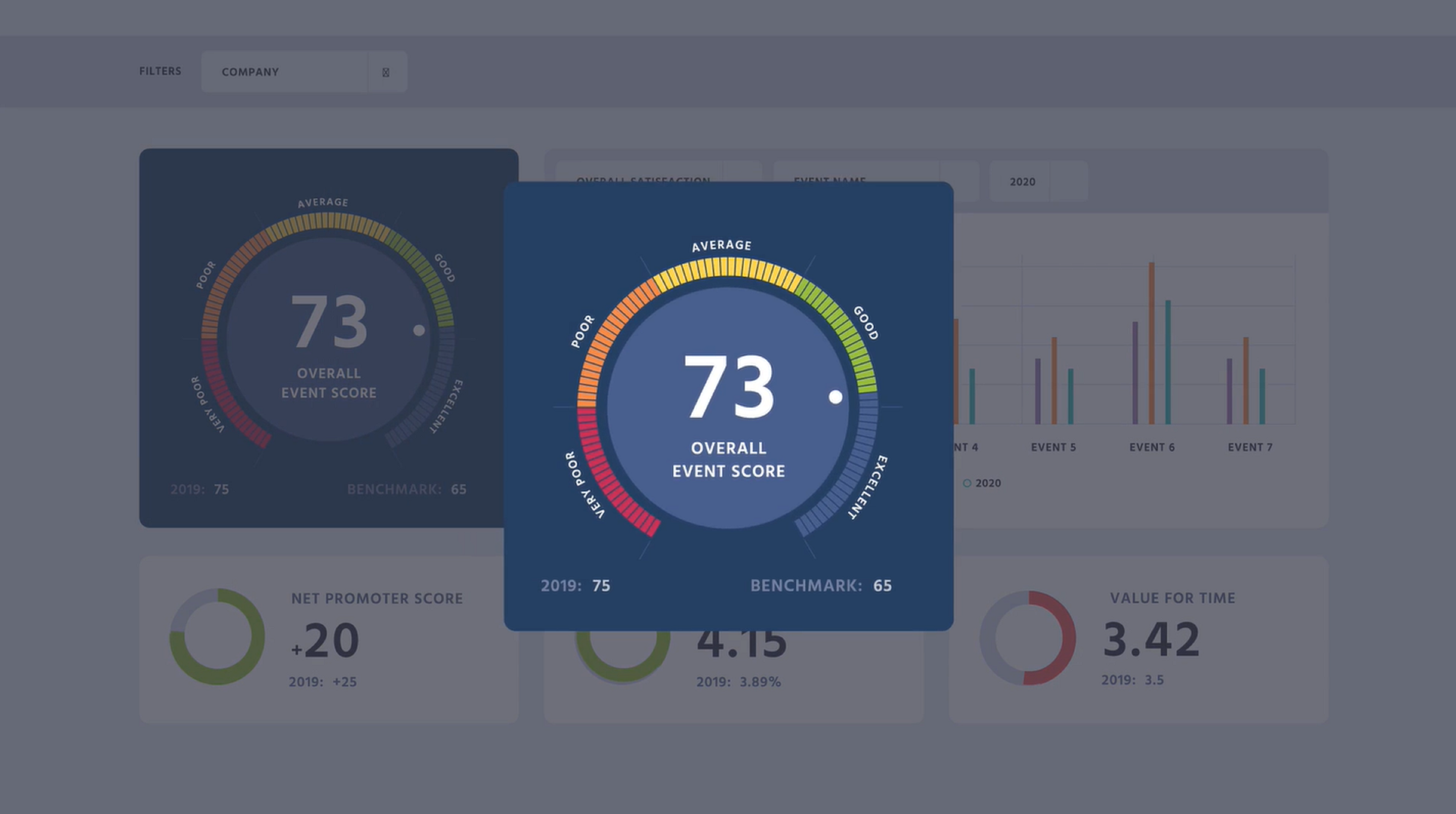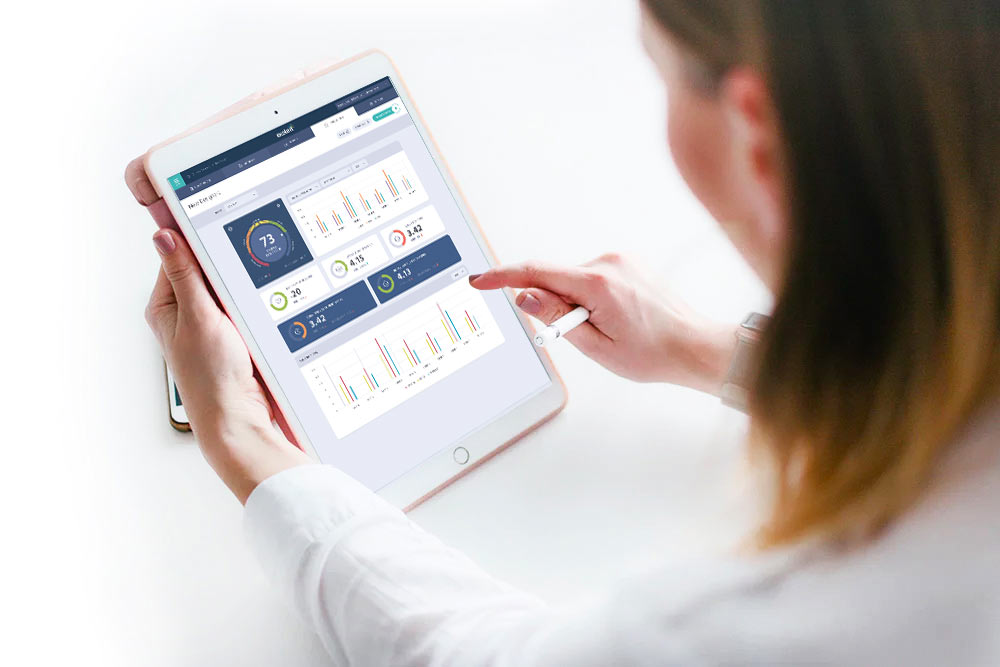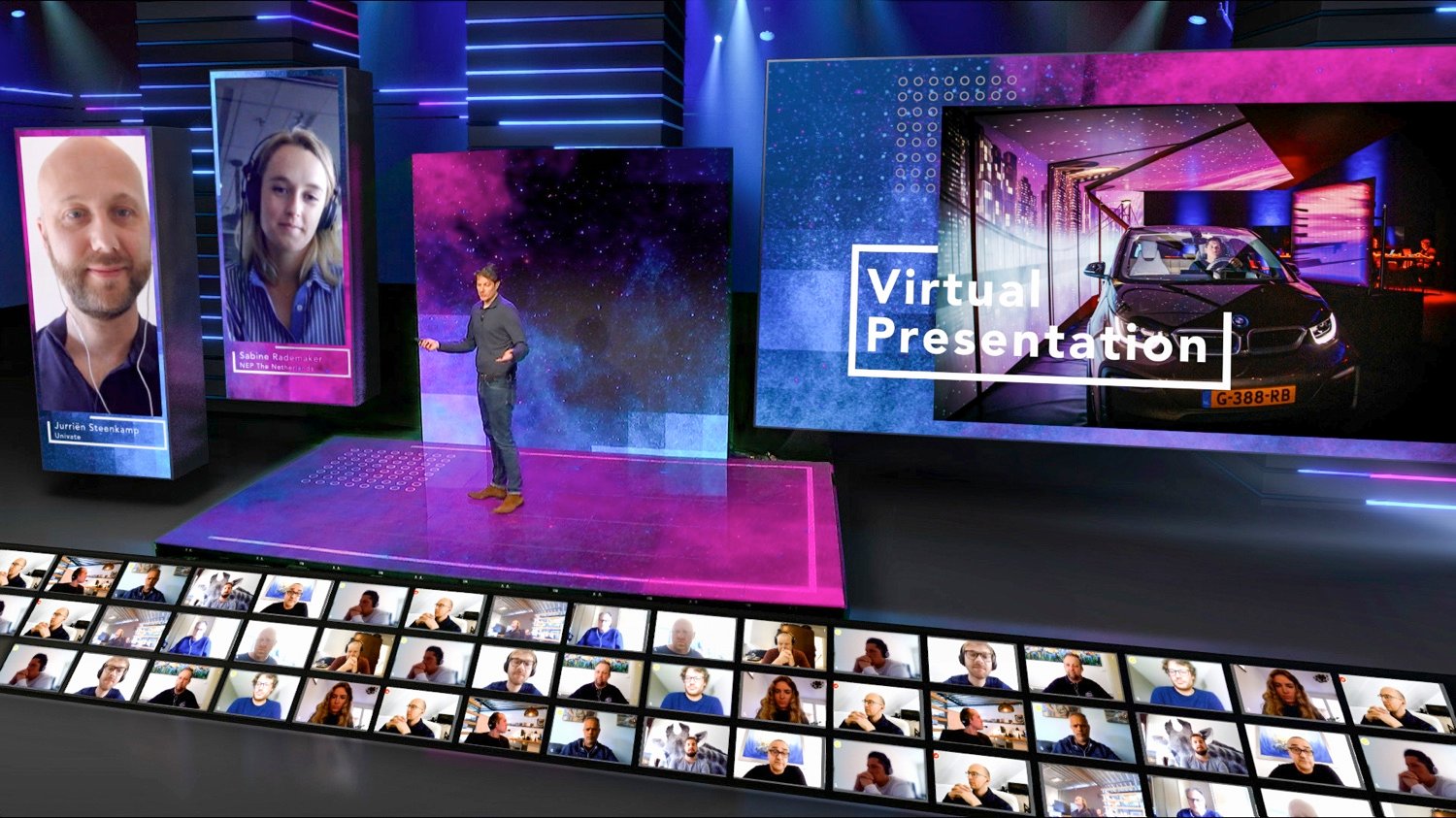
Explori Blog
Updates, announcements and articles you need from the Explori—all in one place.


How to monetize your virtual events
Mar 3, 2021
How can event organisers monetize their virtual events? Evolve 2.0 hosted our Manging Director, Sophie Holt as an expert speaker to share the latest data-driven insights on how organisers can monetize their virtual events. Learn more in the video below. Sophie shares that in order to have a conversation about monetization organisers must first assess the value their virtual events are providing to attendees. There are three ways to maximise the value driven by virtual events: 1. Data In the above video, Sophie shares that organisers have access to a wealth of valuable data. This isn't solely limited to interactions that have taken place on the platform (i.e. connections, meetings, sessions attended etc). Organisers can also observe how attendees interact and journey through your content. This will help you understand what they are looking for and build some assumptions about what their challenges are. Collating this can provide the necessary context to pair attendees with relevant sponsors/exhibitors who can solve their problem. 2. Responsiveness Unlike face-to-face events, virtual events can be organised within a few weeks. The agility of this event format allows organisers to be responsive to what is happening in their communities. 3. Niche content From the exhibitor feedback we have gathered exhibitors are saying virtual events are good for generating lots of leads. This suggests exhibitors are benefiting from the increased reach of a virtual audience. However, they are struggling to get these leads to the qualification stage as they would at a face-to-face event. For organisers, this presents an opportunity to create hyper niche events/experiences within a larger virtual event that are targeted to your exhibitors' objectives. Click here to watch the full session and access all of the content from Evolve 2.0

How to make virtual events better for exhibitors and sponsors
Feb 22, 2021
Exhibitor sentiment for virtual events is low according to our latest benchmarks. In March 2020, we started benchmarking exhibitor and sponsor sentiment towards virtual events. We compared these findings to over 3 million data points we hold about the live attendee experience. The benchmarks show that exhibitor Net Promoter Score is significantly lower than live events. It also demonstrates that exhibitors are having a hard time overall proving the return on investment of virtual events. Our client, Seatrade Cruise (an Informa brand) achieved outstanding exhibitor results for their first virtual event. Seatrade Cruise Virtual took place from 5th-8th October 2020 attracting over 11,000 attendees and 750 exhibitors. The event team measured their post-event exhibitor feedback using our event feedback platform. The results show exhibitors scored the virtual event higher than Explori’s benchmarks across all key metrics. Our Research Director Suzanne van Montfoort said, “Seatrade Cruise’s exhibitor Net Promoter Score was 40 points higher than our current virtual events benchmarks. They also scored higher for Overall Satisfaction, Likelihood of Return and Return on Investment. This demonstrates that though exhibitor sentiment across the industry is low there are organisers who are finding ways to deliver a valuable experience for their exhibitors until they are able to return to events in-person.” Click here to find out how the Seatrade Cruise team did it.
.png)
Case study: Explori's virtual benchmarks & Black Hat Asia 2020
Feb 1, 2021
For more than 20 years, Black Hat Briefings have provided attendees with the latest in information security research, development, and trends. Due to the global pandemic the Black Hat team had to consider how they could deliver value to their attendees virtually. The main objective of the team was to maintain their audience and communicate their core offering through digital. To measure the success of Black Hat Asia 2020 they collected their post-event feedback using our platform. Explori is an event feedback platform which specialises in benchmarking attendee experience. Since March 2020, we have collected attendee experience metrics for virtual events. These benchmarks are available to all Explori clients and provide the necessary context to understand what “good” looks like for virtual events. A virtual event success Overall satisfaction 95% of respondents were satisfied with Black Hat Asia 2020. This is notably higher than our current virtual events benchmarks. Likelihood of return Close to 90% of attendees said they would attend another virtual event organised by Informa Tech in the future. This too is ahead of the current benchmarks. Net Promoter Score Our virtual events benchmarks reveal that attendee Net Promoter Score sits at +10. Black Hat Asia 2020 scored well above this with +41. This indicates attendees are more likely to recommend attending their event. Selecting the right content As part of the feedback process, Promoters were asked why they gave high scores. Promoters talked about the event being informative, the high quality of the sessions as well as the platform quality and overall organisation. “It goes through a pretty extensive review process,” says Richard McCarthy, Senior Marketing Director at Informa Black Hat. “[There are] multiple layers of reviews before the talks are accepted and then the speakers are given the option of additional training from some of our review board members. So by the time they hit the stage it is ideally cutting edge research, that hasn’t been presented anywhere else, that has been vetted by a panel of experts, and is for the most part exclusive to Black Hat.” The Black Hat Asia team also worked with a high-end production company. They organised studios across various regions which allowed speakers to record their session under the guidance of the production crew. Speakers who were unable to record in the satellite studios were sent equipment such as lighting and easy to use instructions so they could record from home. In our recent study we analysed attendee sentiment towards the future of digital and hybrid events. In this research we discovered some of the strengths of virtual events, particularly related to content. The study revealed over 50% of respondents said the quality of content for digital events was the same or better than live events. This suggests that organisers who invest time delivering high quality content for their digital events will be more favourable to attendees. Measuring virtual events Suzanne van Montfoort, Explori’s Research Director, was the lead researcher analysing Black Hat Asia’s results against Explori’s virtual events benchmarks. “One of the things Black Hat, amongst other clients, find useful about our platform is the ability to benchmark attendee experience,” says van Montfoort. “It’s important to compare like for like as we’ve seen significant variations across KPIs. For example, Net Promoter Score for live events is +11, for virtual events +10 and for webinars +46. Therefore, we built out virtual benchmarks separate to our live events benchmarks. It was fantastic to share with the event team how Black Hat Asia has outperformed the industry benchmarks.” Top tip for running a virtual event “Know what makes your event unique and play it up really well,” says McCarthy. “Content has always been most important for paid attendees so that’s where we invested the most time energy. Making sure the quality was as high as it could be. Making sure the speakers were available to do a live Q&A. Making sure the broadcast elements worked. Really focus on the thing that people were paying for. And that paid off you can see it in the survey results. It was absolutely worth making that investment in the content delivery. And it is tough but figure out that one thing that is going to make your show really work and invest in it. Treat your event as a broadcast and not as a static website. You have to treat it like you’re producing for Netflix or network TV. It’s got to be high end and it’s got to be seamless.”
.png)
11 most important post event survey questions for attendees
Jan 27, 2021
How do you know if your event is a success? Better yet, how do you know if your attendees will be back next year? The explosion in event technology means organisers have more data than ever about how attendees are engaging with events. From the number of meetings booked to sessions attended and questions asked. However, this data isn’t capable of telling you why. Why are attendees engaging, and will they come back to your next event? This is where surveys come into play. For the last decade, Explori have been helping organisers use surveys to gather post-event feedback to develop more customer-centred event portfolios. We benchmark attendee experience for over 3,000 events globally, and analyse over 3 million data points on attendee and exhibitor sentiment. We are a trusted research partner for the Global Association for the Exhibition Industry (UFI) supplying annual reports to organisers. Our expertise lies in creating surveys that provide strategic insights to event teams. In this post we will share with you our definitive list of post-event survey questions. We will give you nine questions you can use in a live or virtual event survey and two bonus questions to include in your virtual event survey. What is a post-event survey? A post-event survey is a questionnaire. It is normally distributed via email to visitors, exhibitors, speakers, people who registered but did not attend, and any other participants. The survey normally consists of a combination of multiple/single choice and open-ended questions. The purpose of sending a post-event feedback survey is to understand the event through the eyes of attendees. Post-event surveys are crucial to any organiser interested in adopting a more customer-centred approach to their events. Types of survey questions There are different types of questions you can include in your post-event survey depending on the type of data you want to collect: Rating scales - measures the level of agreement with a question that can be quantified for reporting. It’s best to use a 5-point scale to avoid skewing survey responses. Multiple choice - useful when there are a few different options that could apply ie. when asking attendees about their reasons for attending your event. Open-ended - brings the attendee experience to life. It produces qualitative data which tends to be more emotive and specific at outlining sentiment. Screening questions At the beginning of your event survey it is important to include screening questions to ensure the integrity of the data you are collecting. When creating client surveys the first question we ask is ‘Did you attend [eventname] from [eventdates]?’ If the respondent says no they are routed to an exit screen. We then include a second screening question which asks ‘Did you attend as…’ and provide a single choice option of either Visitor, Exhibitor or Member of the press. If the respondent is not the intended recipient of the survey (i.e. an exhibitor receives the visitor survey) they will be rerouted to an exit page with a link to the relevant survey for their group. By including screening questions you can ensure your survey is being completed by the right members of your audience. Post event survey question examples Use these questions in both your live and virtual post-event surveys for attendees 1. Overall how satisfied are you with [eventname]? This question allows you to directly measure attendee satisfaction and get a more bird’s eye view of how the event went overall. This is a great way to gauge the success of your event. You can also use it to unpick which aspects of your event are driving satisfaction by creating crosstabs with other questions in your survey. 2. What were your main reasons for attending [eventname]? In other words, what is your event helping attendees do? Our studies show that the top five objectives of trade show visitors are: attending the conference, attending seminar sessions, seeing new products and innovations, keeping up to date with market trends and seeking new business partners. When using this multiple-choice question include a list of common objectives and allow respondents to select more than one. 3. Please state how well you met each of your objectives at [eventname]? Allow respondents to state how well they were able to meet each of the objectives they selected at your event. This will give you an indication of what objectives you’re helping attendees achieve versus the objectives that are going unmet. For example, across the 3,000+ shows we have benchmarked, we found there are three common attendee objectives that are poorly met at trade shows: Keeping up to date with market trends Seeking new business opportunities Seeing new products and innovations Most importantly we discovered these three objectives are highly correlated with overall satisfaction. This suggests that if you improve the ability for attendees to achieve these objectives you will see an increase in attendee satisfaction. 4. Overall, how well did you meet your objectives? Not all objectives are created equal. This is why getting an overall score is important. Earlier in the survey attendees may select five different objectives and only score one as being well met. But that one could have represented their main objective for attending the event whilst the others were ‘nice to haves’. This question will give you an overall view on how successful your event is at helping attendees achieve their objectives. Alternatively with a tool like Explori, this can be calculated automatically based on the previous question responses. 5. How likely are you to recommend our event to friends or colleagues in the industry? Net Promoter Score is an industry standard when it comes to measuring attendee experience. This allows you to measure your attendees’ likelihood to recommend your event and can be included in your post-event surveys for both virtual and live events. Respondents rate their likelihood to recommend on a scale of 0-10 and are banded into groups based on their scores. Promoters (9-10 rating) Passives (7-8 rating) Detractors (0-6 rating) The Net Promoter Score is then calculated by subtracting your percentage of Detractors from your percentage of Promoters. Organisers often ask what is a good Net Promoter Score. Technically speaking anything above zero suggests you have more Promoters than Detractors and is therefore a good score. The Explori platform benchmarks NPS for live and virtual events globally. This allows clients to compare the performance of their events against the industry standard and get a real sense of how their events compare to the industry benchmark. 6. Please tell us why you gave that score? i.e. recommending the event to a friend or colleague Open questions are a great way to collect qualitative data that can be used to explain scores. We always suggest adding an NPS reasoning question. It allows you to do some meaningful analysis of your detractors and promoters. For example, in the Explori platform clients can filter by NPS score to see all the responses given by detractors or promoters. Filtering in this way can give you a sense for why some attendees are detracting and why some are promoting. 7. Considering the total investment of your time spent, how would you rate the value you received? As event organisers we are in the business of creating value for our attendees. Asking a question about their perceived value of the event is a great way to measure the usefulness of the event relative to the time cost. Our latest research found that attendees score virtual events as being better value for time than live events. Including this question in your post-event survey will allow you to spot commonalities between attendees who rate virtual as better for time and those who do not. 8. What was your favourite aspect of [eventname]? The main aim of gathering feedback is to understand how to improve your event. However it is important to keep an eye on what is going well to make sure you don’t eliminate those aspects from future events (ie. a networking format that attendees enjoy). This open-ended question can provide some useful information about what is working at your event. You may also be able to use these responses as testimonials if you ask respondents to opt in. 9. Do you have any suggestions on how the event could be improved? Including a question about improvements is an easy way to spot what aspects of your event haven’t landed well with attendees. Depending on the tool you use, you can filter based on satisfaction or NPS to see what improvements are suggested by attendees. Virtual event survey questions For use in your virtual post-event surveys for attendees 10. How likely would you be to attend future virtual events from the organisers of [eventname]? This question provides a double benefit. On one hand it can communicate a level of satisfaction with the virtual event you organised, but it can also indicate whether or not your attendees are likely to attend future events. This is particularly important as you might be assessing what role virtual events will play once we return to organising live events. 11. Overall, how would you rate the delivery of the virtual event? Whilst you might still be finessing exactly how to deliver virtual events this could be a great question to add into your post-event survey. Pair it with an open-ended follow up question where respondents can explain why they have given it that rating. Final point To create strategic events that keep its customers at the centre organisers need to collect consistent feedback. Post-event surveys are the only tools built to give organisers an insight into their attendees and exhibitors. If you would like to start measuring your events take a tour of the Explori platform.

How to measure hybrid events
Jan 19, 2021
When measuring your hybrid events it is important to can effectively report on both the virtual and live experience of your events. Explori is an event feedback platform. It makes measuring and reporting on your events easy, and captures the true impact of events on attendee experience and real business goals. In one simple view, you can see how all of your events are performing against any key performance indicator. Watch the video below to learn more about how Explori measures hybrid events. Click here to take a tour of the Explori platform.

How to measure the success of your virtual events
Nov 26, 2020
We recently conducted a study on behalf of ICE, the International Corporate Event Planners association. Two-thirds of respondents said a top challenge for them over the next three years is using metrics to effectively measure performance. However, despite these perceived challenges the research found that organisers are less likely to measure the performance of their virtual events compared to their live events. Respondents agree that measuring metrics such as the impact of the event on future behaviour, sales, and brand awareness is just as useful for virtual events as it is for live. However, 23% fewer organisers are measuring customer feedback for virtual events relative to in-person events. This suggests that organisers are missing out on a golden opportunity. There are three different types of data available to organisers to measure how their events are performing. Access to those three types of data is made even easier through virtual event platforms. But not all of them can tell you about the output of your event. What are these different data types and what role do they play in helping organisers understand the impact of their virtual events? I like to think of them as building a car... 1. Demographic data - Who are your attendees? The body of your car is your demographic data normally collected via your registration form. In ICEINSIGHTS’ report 2020, we found that over 90% of event organisers think registration data is useful for virtual events, however only 3 in 4 were measuring attendance for their virtual events. Demographic data takes your feedback from being a tangled mess to clear lines of activity. Person A did X. Person B did Z. In order to gather individualised feedback from other tools like your event app or matchmaking technology the registration data needs to be available. For your employee events which don’t require a registration tool, this information could be collected from your HR system. 2. Engagement data - What are your attendees doing and when? Engagement data provides the wheels for your car. Your engagement data builds a profile of what your attendee did at your event including: which sessions they attended, who they organised meetings with, poll responses, Q&A data and more. At an in-person event this is typically the data that is hard to come by. It requires investment in tracking technology to understand how attendees have moved around the venue and dwell time. For virtual events this data is usually built into the platform. Event organisers can see how traffic flows from one session or activity to another to establish patterns and unlock what engagement really means for their events. 3. Sentiment data - Why did your attendees engage and what do they intend to do next? So you’ve got the body of the car and the wheels, but a car without an engine isn’t much use to anyone. This is where your sentiment data comes in. Sentiment data is collected through feedback surveys and plays a crucial role in driving the event strategy forward. Survey data allows you to demonstrate the power of your events relating to impact on brand awareness, future sales and behaviour. Before I go any deeper on this let’s address the elephant in the room. I can bet you, like me, don’t wake up in the morning and think, ‘You know what I’d love to do today? A survey.’ We’d probably love to play with some AI-driven matchmaking apps, facial recognition software and see cool traffic session patterns. But surveys? Blurgh. That’s fine I’m not going to try and sell you on why surveys are the most exciting technology. However, maybe you’ll share in my understanding that they are the only event tech available which makes sense of; why your attendees took time out of their busy schedules to take part, what they got out of it, and why events matter to the business you work in. That being said a survey is only as insightful as the questions you put in it. You can use surveys to quantify attendees intention to purchase, intention to re-engage with the brand or likelihood of recommending your product or service to a colleague or friend. The most useful surveys build questions off the back of key event impact objectives for their virtual events. By asking these questions consistently across your events you’re able to establish a measurement language for the events function. You can compare events internally to see what good really looks like for your events. And if you’re using a tool like Explori you can benchmark your events against your industry. Thanks to technological improvements, feedback surveys have become less time-consuming to collate and analyse. You can easily make cycle-to-cycle comparisons for repeat events. The best survey technology will have built in benchmarking capabilities so you can easily compare how your virtual events today compare to hybrid events in years to come. If you would like to measure and benchmark your virtual events contact our team of experts who will be happy to help, or download the Event Impact Playbook for a do-it-yourself guide.

Are your virtual events fulfilling their objectives?
Sep 25, 2020
At the beginning of the pandemic, event profs were in firefighting mode and worried about the impact it would have on their jobs.Though in some parts of the world live events have returned, many other countries are still stunted by government and travel restrictions. The ‘pivot’ to virtual was a swift one with many rising to the occasion. Planners were forced to learn by doing. Whilst some of these early experiments failed the result has been the creation of some exceptional online events which demonstrate the core value of events; delivering unforgettable experiences. I attended my first hybrid event in July. An event I have been desperate to attend for years but could never quite stump up the money to go. They were going hybrid with a 4-day, 12-hour long conference and I was not going to miss it. What made that experience so engaging that I stayed glued to my laptop for the entire conference? The energy of the presenters was palpable, the interaction with the audience, and seeing everyone’s videos on those curved IMAX screens. Every hour we got up and jumped up and down to some music so our bodies and brains didn’t fall asleep (sorry downstairs neighbours). And just like that a 4-day, 12-hour long conference came and went and I closed my laptop feeling energised (said no one ever after a 4-day conference!) Being the event nerd that I am, I left that event wondering... What purpose/goal/mission were the organisers pursuing when they decided to take the risk of running this event? Were they looking to drive sales, raise brand awareness, increase brand affinity? I felt I had met my objectives but how could they, or any other organiser, measure my energy and excitement to understand whether or not the event had fulfilled its stated purpose? They did some up-selling where they provided an opportunity for attendees to purchase another course. This could have been the main objective for putting on the event. But not signing up for the upgrade doesn’t mean I had a bad experience. Therefore the organiser might look to my willingness to refer. They can measure my likelihood to recommend the event to family and friends using the popular Net Promoter Score. But again it doesn’t give the organiser a complete picture of my experience and the overall impact of the event. So what will? Here are 3 ways you can distil the experience of your attendees into metrics from Explori’s free Event Impact Playbook. If you want to get to the heart of your attendee’s experience you should try to measure these three things in your feedback survey: Cognitive impact Impact on sentiment Behavioural intention Cognitive impact What is the change in knowledge and understanding we would like to happen as a result of our event? Cognitive feedback questions will help you understand if your event succeeded in delivering the main communication points ie. the new features of a product. Did the necessary knowledge transfer occur? Impact on sentiment How should attendees feel after they leave our event? Sentiment feedback questions provide the perfect opportunity to learn how your event has impacted brand perception. Do attendees feel like your company cares about the needs of its customers and employees? Or do they agree that your brand embodies the core values it promotes? Behavioural intention What is the behaviour we intend attendees to take as a result of attending our event? This is particularly important for events which are part of a long communications/sales cycle. Within a week of the event you’re able to understand what behaviours your event has influenced. Are attendees more likely to purchase, remain employed or recommend your product/service? Behavioural intention is where you see the tangible value of your events for your business. Let’s look at this in the context of my first virtual/hybrid event experience. Just because I didn’t upgrade to the next course doesn’t mean the organiser failed in their objective. If they measured my behavioural intention they would be able to see that I intend to participate in their next live event. Through my sentiment score they would discover that I absolutely agree the company helps individuals and businesses succeed. And my cognitive score would highlight they had successfully communicated the message that ‘everything you need to succeed is already within.’ There is so much more when it comes to measuring attendee experience that I haven’t shared here. And if you’ve read so far into this article, please tag a friend or colleague who you think would find it interesting/useful. For a full list of attendee experience metrics you can measure for your next virtual/hybrid event, download the free Event Impact Playbook
.png?width=150&height=61&name=explori_logo%20(1).png)